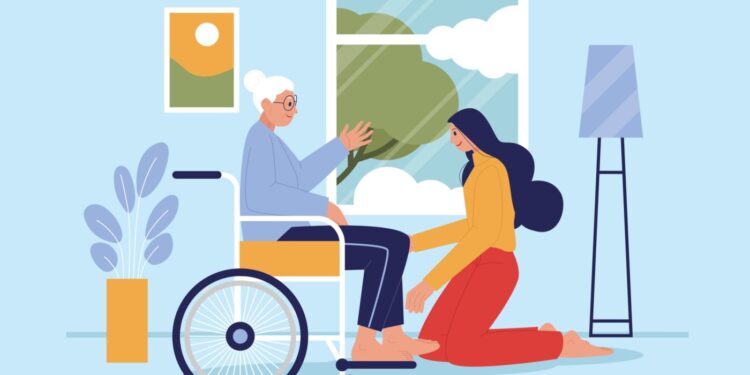
Special days are set aside for various reasons: Some are dedicated to honor, others to remember and others to raise public awareness.
National Caregivers Day checks all the boxes.
This special day is celebrated on the third Friday in February. This year it fell on February 21. It is a day to honor the individuals who provide personal care and physical and emotional support to those who need it most. It also is a day to remember their value and increase awareness of the vital role they play in caring for our older adults.
There are two types of caregivers, paid and unpaid. Both frequently have long-term commitments and often are underappreciated, underpaid or not paid at all.
I recently had the opportunity to speak with an unpaid family caregiver whose husband suffered a stroke at age 64. He has no use of his left arm, has a weakened left leg and is unable to speak. I asked her about her typical day.
Here is her story:
“I get up before my husband to enter the day slowly, so my adrenaline is not on edge. I don’t want to jump into action. I clean out the urinal, get him up and ready for a shower, making sure the shampoo bottle is open and accessible. He showers himself except for the left side of his body, which is where I help. After he is dried and gets into his robe, I spend about 30 minutes stretching his arms and legs every day. Next, I select his clothes, help him dress and spot him as he goes down the stairs. I then go outside to get the newspaper, make breakfast according to his choice that he expresses with a communication device. After breakfast, he takes a nap and I then tell him the schedule for the day. Next, there is lunch.
“Every day there are household tasks such as washing dishes, laundry, shopping and more. Each weekday he has one therapy appointment for physical, occupational and speech therapy. The appointments are at least a half hour or more from our home. I drive him on all days except one. I stay with him at almost all appointments since he cannot speak. Once at home after therapy sessions, it’s time to prepare dinner which involves planning, prepping and cooking. After watching some television, I help him get ready to sleep for the night. Then I turn in.”
She adds, “I feel responsible for his mood and do things to cheer him up when blue. I also am continuously aware of his fatigue level which affects his balance. In my free time, I attend a weekly Pilates class and sometimes have coffee with friends.
When I have asked her how she is doing, she typically replies, “I’m tired and exhausted,” yet she never complains. This family caregiver receives about six hours a week from a formal or paid caregiver when she is at a class, grocery shopping or having an occasional coffee with a friend. Her spirit, commitment, strength and competency are admirable.
Since I know her very well and care about her, I offered some unsolicited advice, which was, “What you are doing is not sustainable over time.” I told her she may be headed for caregiver burnout. That is a state of physical, emotional and mental exhaustion that happens when you are taking care of someone else.
Caregivers face an increased risk of heart disease, and women caring for a spouse are more likely to report having high blood pressure, diabetes, and high cholesterol, according to Harvard Health Publishing.
So, the first rule for caregiving is “take care of yourself,” according to the Family Caregiver Alliance. And that includes managing stress. Warning signs might be poor sleep, irritability and forgetfulness. Consider identifying sources of stress that you can and cannot change and then take some action. Examples are walking, meditation, a yoga class or whatever works for you. And if affordable consider having more time from the paid caregiver and asking family and friends to help.
Our nation is facing a caregiver crisis – meaning we will not have enough caregivers to care for an aging population. The most significant factor in this shortage is our rapidly aging population with most older adults wanting to age in place. This preference has increased the demand for in-home care with the supply not matching the demand. And then there is the issue of affordability of in-home care. That’s another column.
Each of us can be a resource and support to a caregiver. Consider delivering a meal or two, offer some respite time, make a phone call or stop by for a visit.
Let’s all celebrate Caregivers Day – every day – and honor the unsung heroes: our family caregivers.
Helen Dennis is a nationally recognized leader on issues of aging and the new retirement with academic, corporate and nonprofit experience. Contact Helen with your questions and comments at [email protected]. Visit Helen at HelenMdennis.com and follow her on facebook.com/SuccessfulAgingCommunity.







